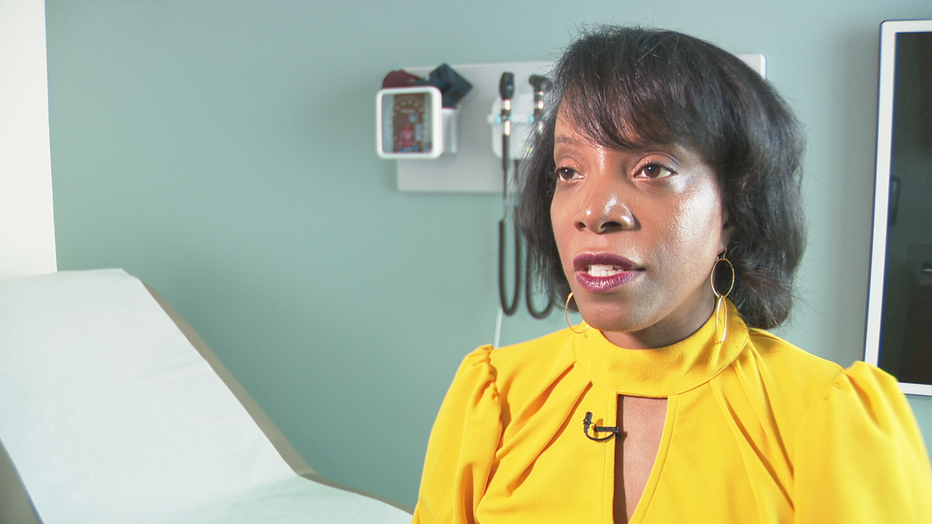Feeling down in the dumps? You may have Seasonal Affective Disorder

Seasonal Affective Disorder
As the days grow shorter and the nights longer, you may notice your mood is changing.
ATLANTA - With the long summer days now history, and winter ahead of us, millions of Americans are struggling with a type of depression known as Seasonal Affective Disorder, or SAD.
Dr. Melonie Bell-Hill, Ph.D., a licensed psychologist and Associate Professor of Clinical Psychiatry at Morehouse School of Medicine in Atlanta, says in the fall and winter, it's natural to experience a drop in mood.
"I think a lot of times, people get energy from the sun," Bell-Hill says.

And, with less sun, more people experience Seasonal Affective Disorder, or SAD, which Bell-Hill says is real.
SAD is more common in women, younger adults, people with a history of depression or bipolar disorder and those living far from the equator.
"You want to pay attention to your emotional state, your mood state," Bell-Hill says.
Watch for fatigue, a loss of interest in things you used to enjoy, and feelings of hopelessness, frustration, and sadness.
"It's not just sadness, because the other side of depression is irritability," Bell-Hill says. "Anger and irritability can also be indicative of depression as well."
It's not clear what exactly triggers SAD.
Research shows people with seasonal mood disorder often have trouble regulating serotonin, a key neurotransmitter in the brain linked to mood.
They may also produce too much melatonin, which is tied to sleep, and too little Vitamin D, which can trigger depression symptoms.
Antidepressant medication and Vitamin D can ease seasonal affective disorder symptoms.
Another common treatment approach is light therapy, which involves replacing missing sunlight with bright, artificial fluorescent light from a light box.
SAD sufferers will sit in front of the light box for anywhere from 20 to 60 minutes a day.
Bell-Hill says psychotherapy can be helpful, too.
"Try to reach out to a mental health professional, because we're available," Bell-Hill says. "But, if you're not able to do that, look inside yourself to find things you can connect with. Find parts of your life that you can say, 'While this part of my life may not be working, I can certainly try to enjoy this part of my life.'"
Exercise can help ease SAD symptoms, too.
If you don't want to exercise in the dark, shift your workout indoors, or get up early and exercise as the sun comes up.
Since depression can sneak up on us, Bell-Hill says, keep an eye of your friends and family.
"Ask questions," she says. "Say, 'Hey, I just want to check in with you.' Have a curiosity about people. Don't allow people to suffer alone or in silence."
The National Institute of Mental Health says symptoms of major depression include:
- Feeling depressed most of the day, nearly every day
- Feeling hopeless or worthless
- Having low energy
- Losing interest in activities you once enjoyed
- Having problems with sleep
- Experiencing changes in your appetite or weight
- Feeling sluggish or agitated
- Having difficulty concentrating
- Having frequent thoughts of death or suicide.
Symptoms of the Winter Pattern of SAD include:
- Having low energy
- Hypersomnia
- Overeating
- Weight gain
- Craving for carbohydrates
- Social withdrawal (feel like “hibernating”)
Symptoms of Major Depression
- Feeling depressed most of the day, nearly every day
- Feeling hopeless or worthless
- Having low energy
- Losing interest in activities you once enjoyed
- Having problems with sleep
- Experiencing changes in your appetite or weight
- Feeling sluggish or agitated
- Having difficulty concentrating
- Having frequent thoughts of death or suicide.
Symptoms of the Winter Pattern of SAD include:
- Having low energy
- Hypersomnia
- Overeating
- Weight gain
- Craving for carbohydrates
- Social withdrawal (feel like “hibernating”)

